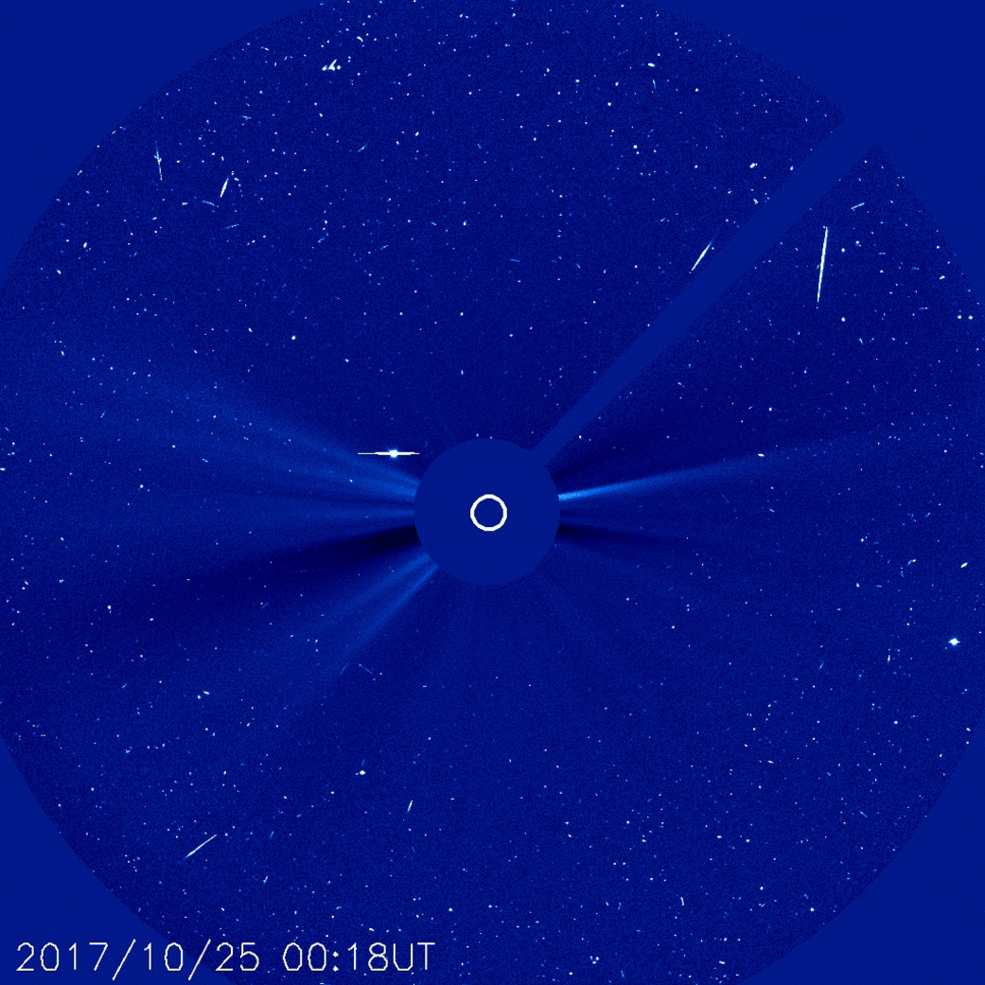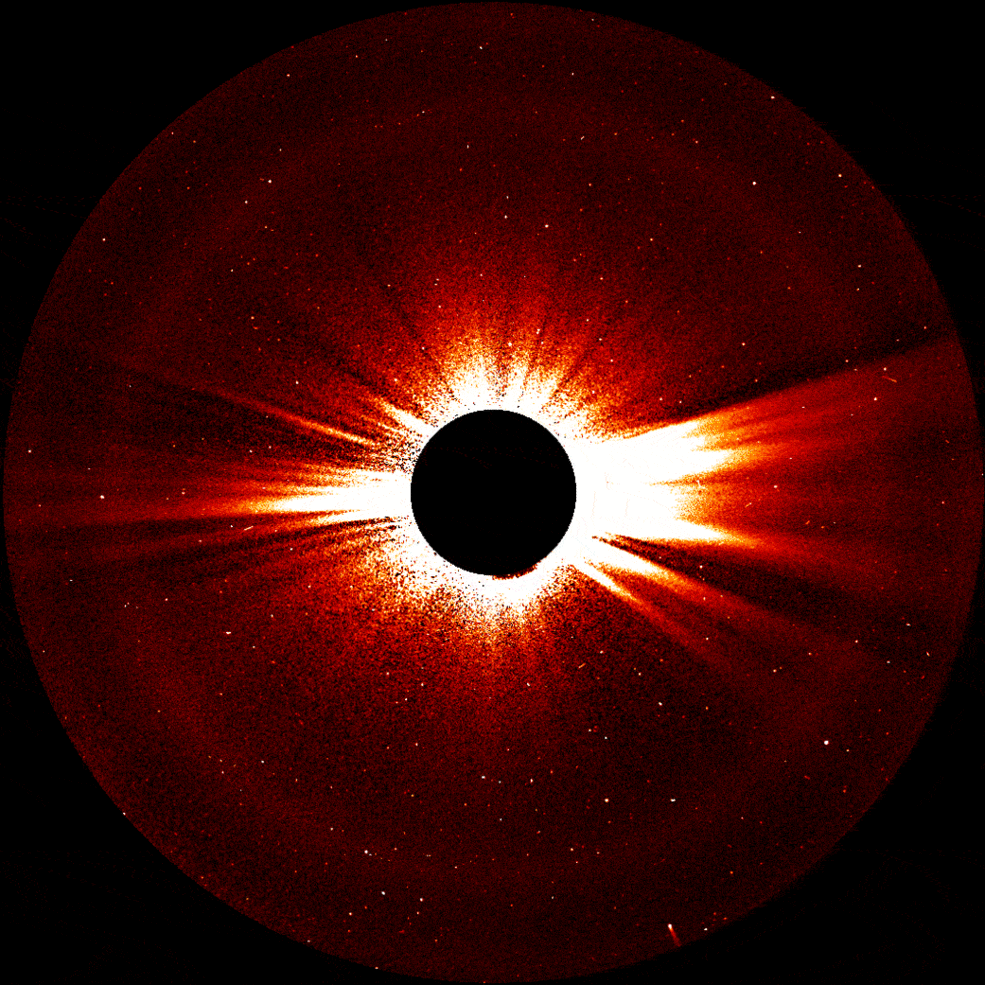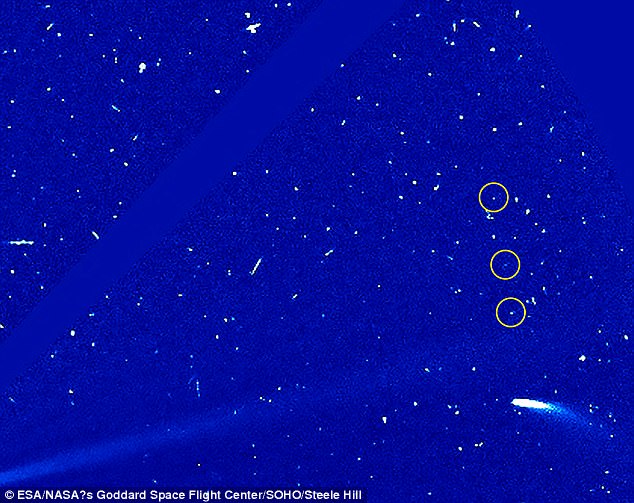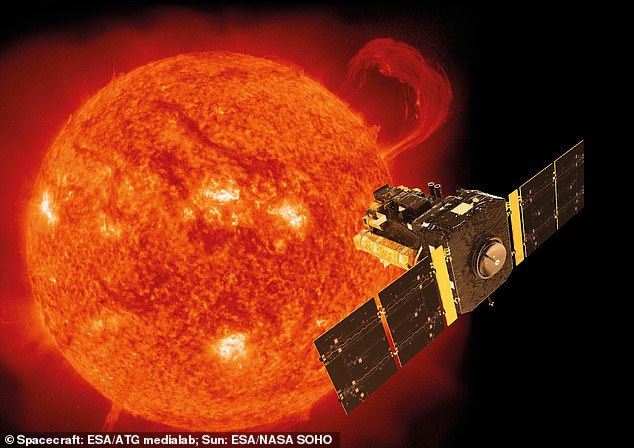Huge ‘alien’ comet the size of Mount Kilimanjaro is streaking straight towards the Sun
>
Huge ‘alien’ comet the size of Mount Kilimanjaro is streaking straight towards the Sun – and scientists think it may have come from another solar system
- Comet 96P/Machholz 1 being monitored by European Space Agency spacecraft
- The space rock is 3.7 miles (6 kilometres) wide and is inside the orbit of Mercury
A large comet that scientists think may have come from another solar system is currently streaking towards our sun.
The ‘alien’ space rock, which at 3.7 miles (six kilometres) wide is the size of Mount Kilimanjaro, was first spotted in 1986 with the help of a homemade cardboard telescope.
Fast forward nearly 40 years and 96P/Machholz 1 is about to make its closest approach to the sun in more than half a decade today (Tuesday), having zipped inside the orbit of Mercury.
Experts think it may have been sent on a peculiar orbit after being ejected from its original solar system by the gravity of a giant exoplanet.
Unusual: A large comet called 96P/Machholz 1 (pictured) that scientists think may have come from another solar system is currently streaking towards our sun

A long time later it could have had its trajectory bent following a run-in with Jupiter, astronomers have suggested, which in turn ensnared it around our star.
The comet is also unusual because it is low in carbon and contains less than 1.5 per cent of the expected levels of the chemical cyanogen, analysis has revealed, leading scientists to conclude that it could have come from another solar system.
Experts now hope to be able to unlock more of the space rock’s secrets as it makes its way towards our star once again.
It is currently being monitored by the European Space Agency’s Solar and Heliospheric Observatory (SOHO) spacecraft, which also kept an eye out when the comet made its perihelion (closest approach to the sun) in 1996, 2002, 2007, 2012, and 2017.
’96P is a very atypical comet, both in composition and in behaviour, so we never know exactly what we might see,’ Karl Battams, an astrophysicist at the Naval Research Lab in Washington DC, told spaceweather.com.


A comet known as 96P/Machholz 1 was briefly captured in October 2017 by the Solar and Heliospheric Observatory (SOHO), before disappearing again five days later
‘Hopefully we can get some beautiful science out of this and share [it] with everyone as soon as we can.’
The comet will make its nearest approach to the sun in five years today (Tuesday), when it will be three times closer than Mercury.
One of the many fascinating things about Machholz 1 is how its size allows it to survive.
Most comets heading in the direction of the sun tend to be smaller than 32 feet (10 metres) wide, meaning they burn up as they approach.
But the enormous Machholz 1 is protected from being fully evaporated, so has been able to make five close passes since it was discovered in 1986.

Keeping a close eye: The comet is currently being monitored by the European Space Agency’s Solar and Heliospheric Observatory (SOHO) spacecraft (pictured), which also watched the comet make its perihelion (closest approach to the sun) in 1996, 2002, 2007, 2012, and 2017
It was spotted nearly 40 years ago by American amateur astronomer Don Machholz, who is credited with the visual discovery of 12 comets that bear his name.
The Virginia native died in August last year at the age of 69, having spent more than 9,000 hours comet hunting during a career spanning over half a century.
If the space rock is not alien in origin – as in it didn’t come from another solar system – then scientists say it could have had its cyanogen blasted off by repeat journeys around the sun.
According to NASA, Machholz 1 is the SOHO spacecraft’s ‘most frequent cometary visitor’.
The probe has spotted more than 3,000 comets since its launch in 1995, although its primary mission is to observe the sun for coronal mass ejections or solar flares that can cause geomagnetic storms on Earth.
